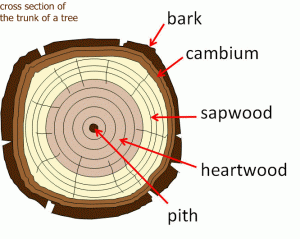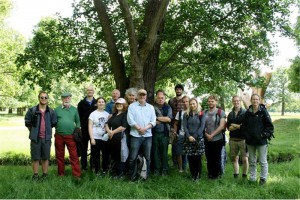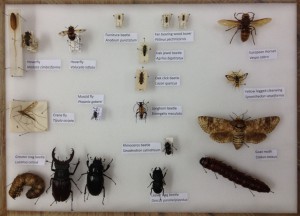June has very much been about trees. I wanted to understand the processes of tree ageing better because saproxylic insect diversity is much greater in old growth trees. As a result, a one day course on recording notable old and veteran trees was the order of the day, followed by the Ancient Tree Forum summer meeting a couple of weeks later. The training day was hugely informative. Not all ancient trees are big, size may not be the best indicator. The growth rate of a tree is all about location, location, location – if a good supply of nutrients and the right amount of sunlight is available then the tree will grow to a larger size than one in a poor area. For example, in Scotland there are some dwarf hawthorns that are thought to be over 150 years old. Of course, the tree species is also important; an elder will never grow as large as an oak.
So, if size isn’t that factor to look for, what is? Well, there are a few characteristics to look for: Hollowing of the trunk – New growth is generated in the cambium layer (see diagram) just under the bark. “Outer” growth gets added to the bark and “inner” growth goes towards a tree ring.
Over time, tree rings age and die off leaving a central core of dead tissue that eventually becomes hollow with the help of tree rot fungi. This doesn’t mean the tree is dying, it’s just part of the natural process. Hollow trees are sturdier than solid ones and better able to stand up to the rigours of nature such as strong winds. Hollowing can also occur in the branches.
Incomplete trunk growth – As a tree ages the circumference or girth of the tree gets larger as more growth rings are added. At some point, the tree will no longer be able to sustain this growth all the way around the tree so it stops growing along a section of the girth. This leads to a tree trunk that is not fully complete and splits exposing the inner surfaces become apparent.
Dead wood – this doesn’t have to be lying on the ground. Most old trees will have some proportion of dead wood in the canopy or lower branches, just one of the reasons they are so good for saproxylic insects. A stage called growing down or retrenching occurs when the roots are no longer able to support new peripheral growth and the area of foliage and the root system are naturally rebalanced and this creates dead wood in the tree crown.
The Ancient Tree Hunt now hosted by the Woodland Trust is a great citizen science scheme. To find out more about this, visit the website and also the Ancient Tree Forum website is a great resource with lots of information. A report from the ATF Summer Meeting can be found here with a pic of yours truly and Dr Sarah Henshall from Buglife looking for deadwood insects in tree hole debris.
In addition, the regular monthly sampling continues and the resulting identifications. I have also participated in the Oxford Festival of Nature at the Wild Fair held at the museum by holding two “pop up expert” sessions with a display of deadwood insects, live woodlice and some bark with beetle galleries.
At the end of the month a fun day was had with 40 local school students learning about entomological survey techniques (pictures from the day are available on the Wytham Woods facebook page).
I have also been asked to help out at the RSPB Big Wild Sleepout event that is being held at Wytham Woods on 8th and 9th August. Activities are now in the planning stage but will include minibeast safari, moth trapping, build a bug hotel, badger watching, bat walks and bushcraft skills. To find out about this event and others held across the country click here.



